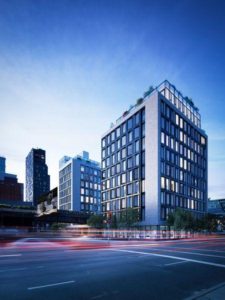Every building needs a fire protection system installed to ensure it is up to code and safe to be inhabited. But while you are probably already familiar with most active fire protection types, such as sprinklers, fire extinguishers, fire detection devices and fire alarm systems, you may not be familiar with passive fire protection.
What is a passive fire protection system?
Passive fire protection is a series of protective measures that work behind the scenes to help contain a fire at its point of origin instead of it spreading throughout your building. In this post, you’ll learn more about this essential type of fire protection and why you need to include it in your building alongside your active fire protection systems.
The 4 Main Areas of Passive Fire Protection
Passive fire protection, when it is installed properly, can help save lives and protect your assets, including your building. It consists of four main areas and involves structural components that are designed to help dramatically slow the spread of the fire by cutting off the fuel it needs to grow. This is accomplished through four main areas of concentration.
- Structural Protection
- Opening Protection
- Compartmentation
- Firestopping Materials
Structural protection involves covering all structural components throughout the building with a fireproofing material to help protect them from the effects of fire, so the building’s structural integrity can remain intact. The type of material used can vary, but typically involves one of the following: fireproof cladding, gypsum-based plaster, spray-on intumescent, or mineral wool wraps and insulation.
Opening protection includes having protective measures in place in every opening throughout the building to help prevent a fire from spreading to other floors. This includes using fire-rated doors, framing, and windows to form a fire and smoke barrier as well as fire and smoke dampers installed in the building’s duct systems.
Compartmentation is the part of the system that prevents fire from spreading throughout the hidden spaces in a building, such as behind the walls. This component includes protective measures such as firewalls, fire barriers and partitions, and smoke barriers. In a compartmentation system, the walls extend from a fire-rated floor to the fire-rated ceiling and continue into the building’s concealed spaces for greater fire protection.
Firestopping materials are protective materials used to fill in holes throughout the building where fire can escape. Such problem areas can include those holes left behind by plumbers, electricians, communications installers, and other contractors after performing their services. Other types of firestopping materials can include the use of special fire-retardant cable and wire coatings and perimeter fire barriers among other things.
Why You Need Both Active and Passive Fire Protection
Fighting a fire in a commercial or residential structure is never a straightforward process because the flames will quickly spread if they have a fuel source to follow. Having both active fire protection and passive fire protection is therefore essential as they work in unison to help make it easier to suppress the fire. Passive fire protection contains the fire, and active fire protection helps put it out. Most importantly, having both systems installed makes it easier and safer for people inside the building to evacuate and for responders to fight the fire.
If you are not sure if your building has passive fire protection or you would like to have it installed, Metro Fire Inspections is a full-service fire protection system design, installation, and upgrade company that can provide you with the services and solutions you need. We specialize in white box, ground up, tenant space upgrades and full building retrofits. Contact us today to learn more or click here for a free quote.





